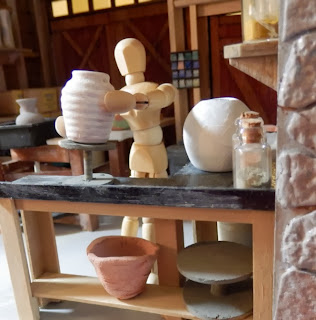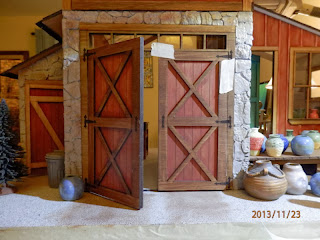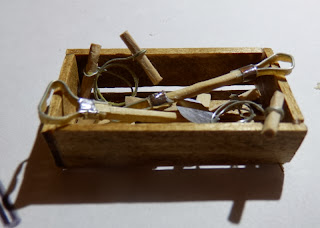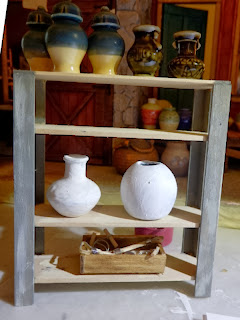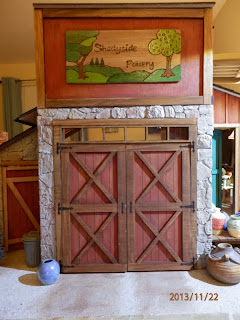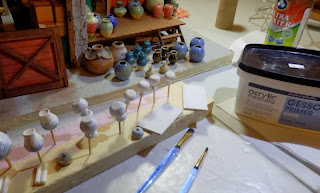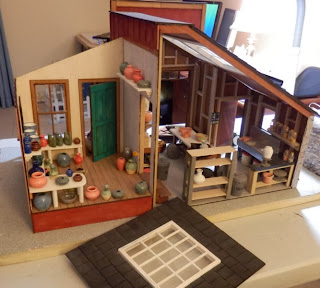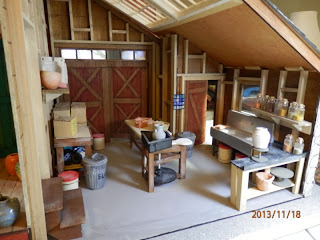The brick-printed paper on the kiln has been bugging me. It didn't measure up to the level of realism I've been aiming for, so today I pulled it off and replaced it with a dimensional brick veneer made from terracotta colored air-dry clay. The paper peeled off rather easily as it had been stuck on with rubber cement.
I was able to use the paper as templates to cut the clay. I rolled the clay to about the thickness of the "real" bricks I had on hand.
I made the brick veneer in slabs. A skinny stick cut lengthwise was used as a guide for making the rows. Its squared end (tapered with an emery board to a chisel edge) was used to make the brick indentations. The bricks are a bit larger than the "real" bricks in the stack (which will be used to seal the kiln when ready to fire), but my claim is that they are hand made and subject to a few irregularities. This was much faster than gluing individual bricks.
A generous amount of Aileen's Tacky Glue on the surface holds the slabs in place. There are a few irregularities where the slabs meet, but I believe they will be minimized when the bricks are painted to match the stacked bricks.
Meanwhile, the manikin I bought to use as a reference for making the potter got out of his box and started playing around in the pot shop.
Now on to something else while the clay dries!




